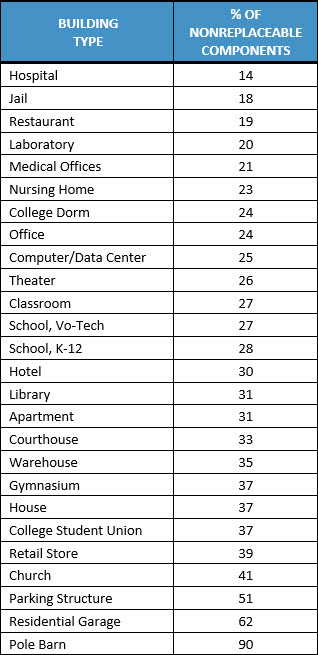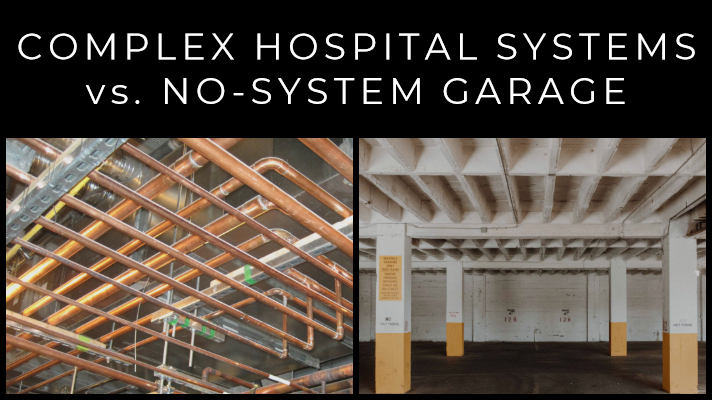As we discussed last month, certain facility types commonly have a relatively high percentage of nonreplaceable structure compared to the CRV. It’s easy to understand that about half the cost of a concrete parking structure is the loadbearing structure itself or that at least two-thirds of a simple utility building (pole barn or residential garage) consists of nonreplaceable structure. There is little else involved in the construction; no complex service systems.
In addition, buildings with large spaces or high bays (retail structures, assembly and event areas, gymnasiums and religious facilities) also have a relatively high percentage of nonreplaceable structural components. Traditional methodologies of calculating CRV do not account for special circumstances like these. As a result, normal condition indices (FCI and FCNI) can get skewed.
To deal with this, ISES has developed a statistical model for structures with large percentages of nonreplaceable systems and components. Generally, if the total cost of a building’s replaceable components exceeds the statistics in the ISES model, the CRV should be adjusted to account for the feature rich or specialized components of this structure. Our model helps to correct abnormal situations so that the condition indicators are maintained. The accompanying table indicates that the percentage of the CRV typically comprising nonreplaceable components can range from 14 (hospital) to 90 (pole barn).
Percentage of Nonreplaceable Components in CRV
(per ISES statistical modeling)



